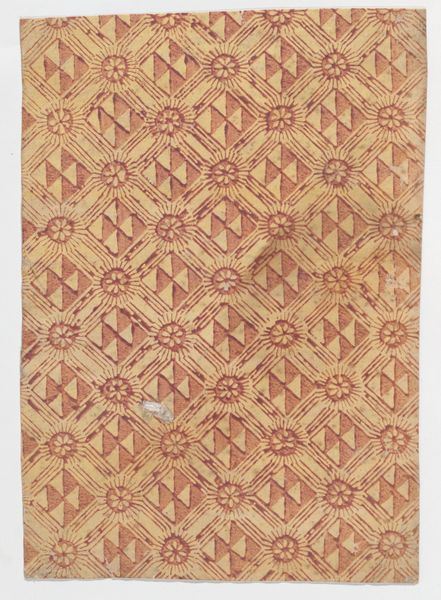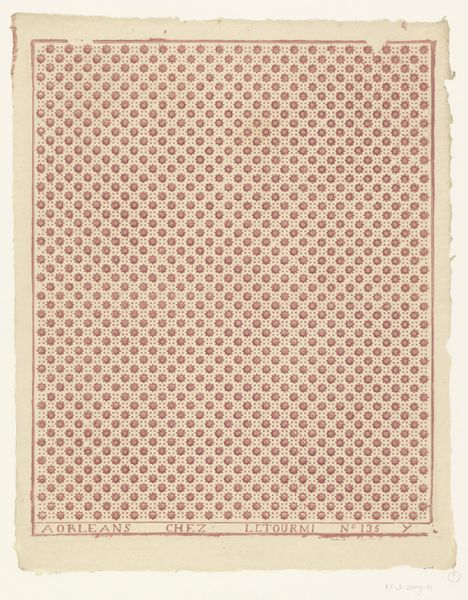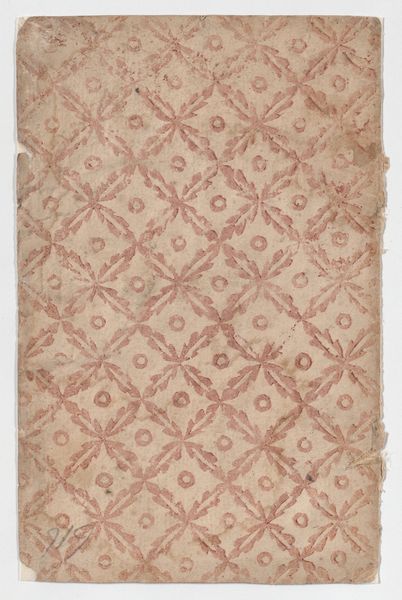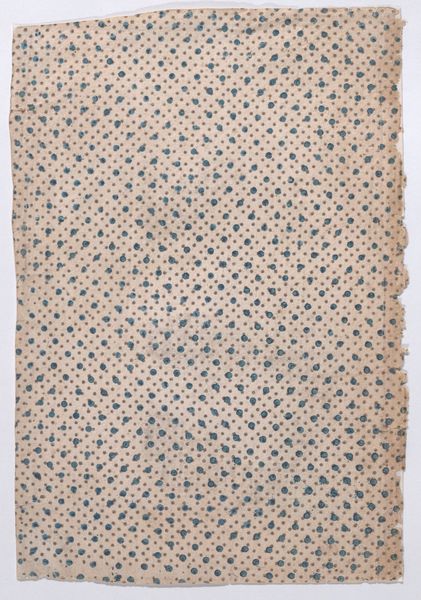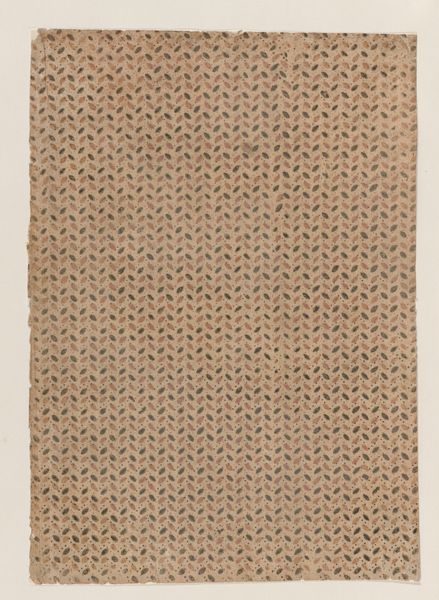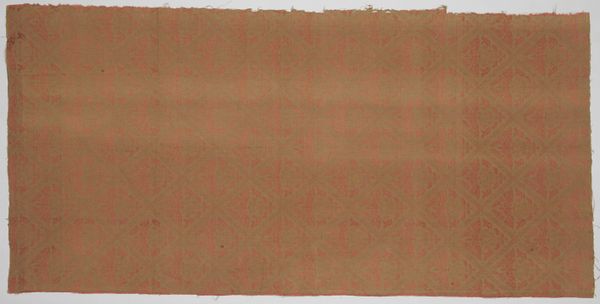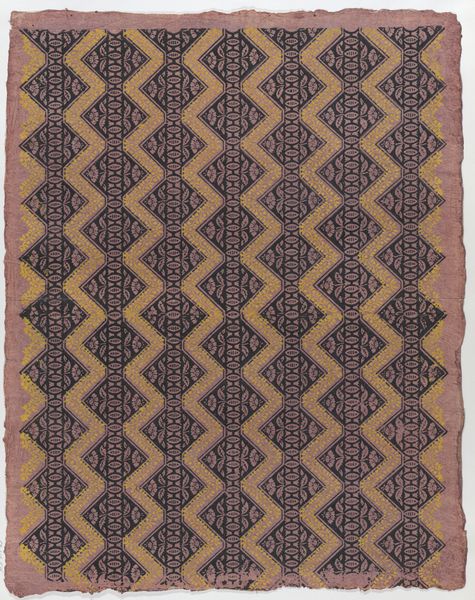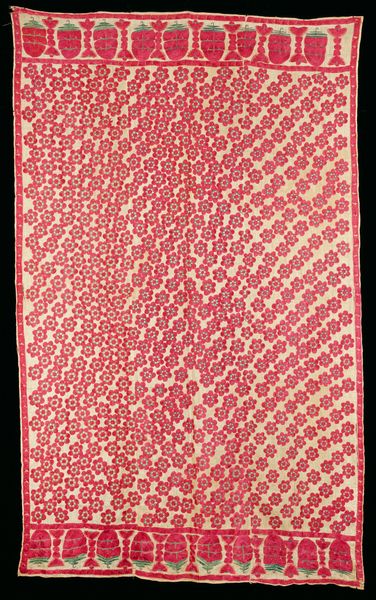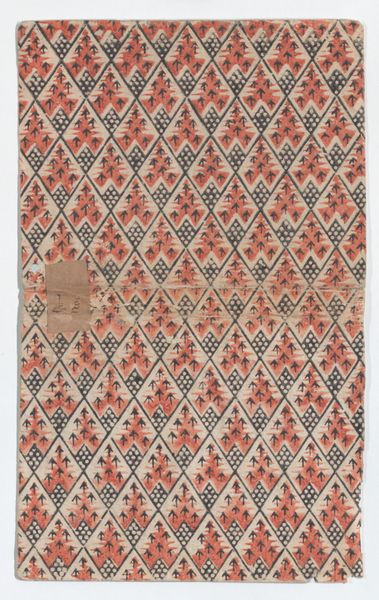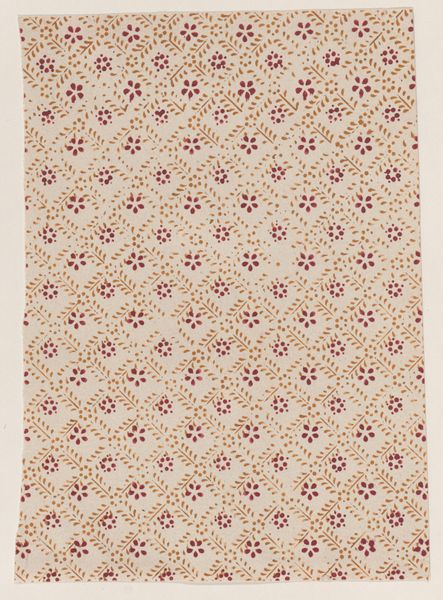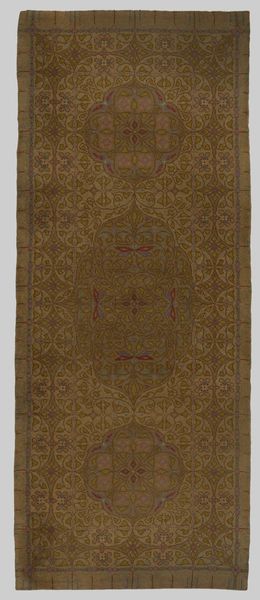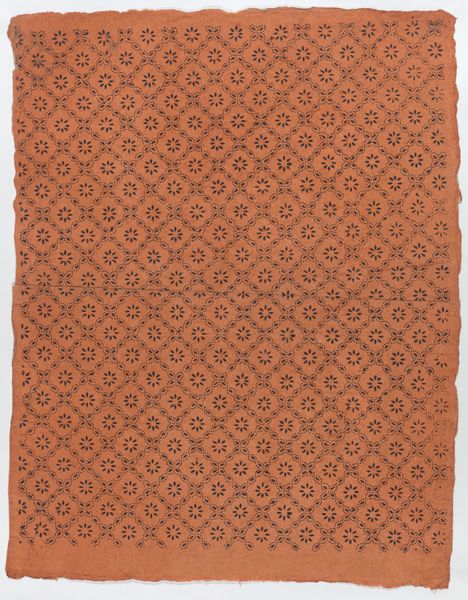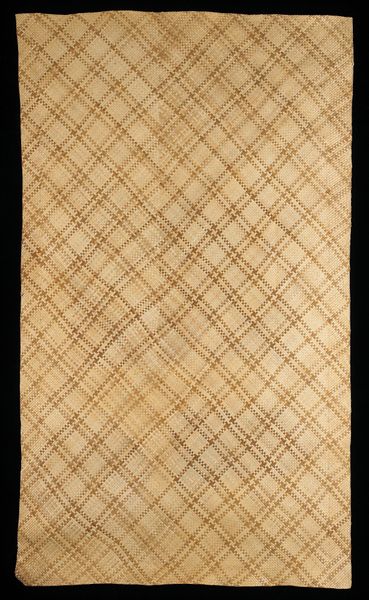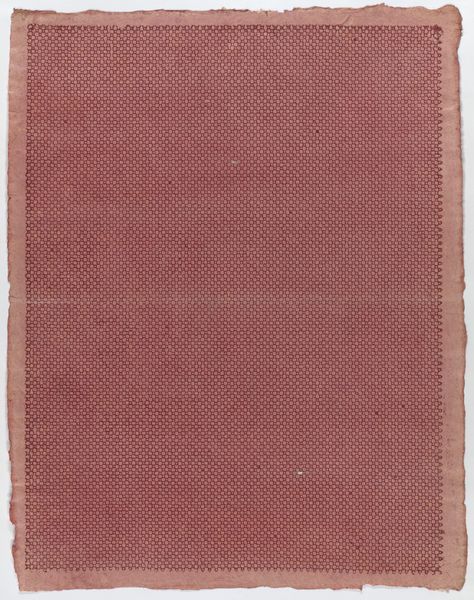
drawing, print
#
drawing
#
natural stone pattern
#
toned paper
# print
#
organic pattern
#
vertical pattern
#
wooden texture
#
pattern repetition
#
textile design
#
imprinted textile
#
layered pattern
#
watercolor
Dimensions: Sheet: 14 5/8 in. × 19 in. (37.1 × 48.3 cm)
Copyright: Public Domain
Editor: Here we have an intriguing geometric pattern created sometime in the 18th century by an anonymous artist. The materials include drawing and printmaking techniques, likely using watercolor. It reminds me of textile design. How do you see this artwork, keeping in mind the labor of creation? Curator: Well, immediately, I’m drawn to the material process itself. It's not just a design, it's evidence of repetitive actions, possibly a form of labour embedded in the printing process. What was the function of such repetitive, geometric prints in the 1700-1800s? Editor: Possibly as blueprints for larger textiles, showing the artisans the design at scale? Did the value lie in its reproduction capability or as an aesthetic object? Curator: Exactly. And that gets to the heart of it, doesn't it? It disrupts the conventional definition of 'art'. This sheet proposes art not just as a product but also as an active site of labor. Is it decorative art meant for a domestic sphere? Or a functional craft item related to industrial manufacture? What is this paper stock—can we analyze its components? Editor: That’s fascinating. It pushes the boundaries. Thinking about the labor behind creating a potentially repeatable image reshapes the way I perceive its artistry. Curator: It makes you think about who was doing this kind of labor. Was this produced under a factory-like condition, with skilled or unskilled labor? Was the making empowering or alienating? We're seeing here not just aesthetic preferences, but possibly embedded traces of social conditions related to the making of the piece. Editor: I’ve never considered art this way before. It makes you consider both its creative origin and purpose. Thanks.
Comments
No comments
Be the first to comment and join the conversation on the ultimate creative platform.
